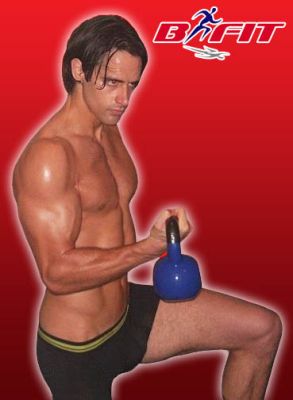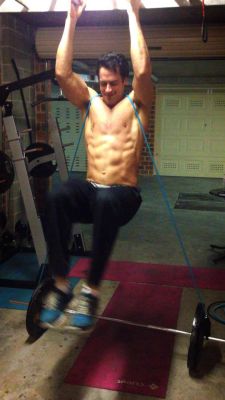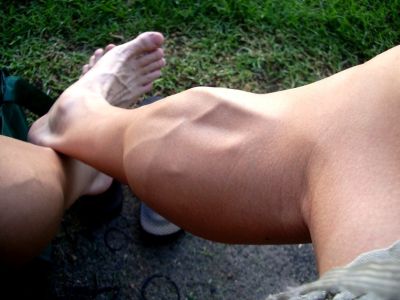
-the “certified” personal trainer at the local big-name gym doesn’t really give (or know) a rat’s ass about training, as he’s just working there to hit on the girls on the exercises bikes. So really, he wouldn’t know a power rack from a Powerbar, much less the difference between training routines.
-the local natural, genetically gifted “wonder boy” does XYZ routine, so half his school copies him
-professional bodybuilding magazines want you to use routines that don’t work to get you to buy recovery-enhancing supplements, so they publish all these goofball routines in their magazines
Reasons like this could go on forever. Whatever the reason, many of these misconceptions have lasted for a very long time.
Using Heavy Weight with Low Reps Will Get You Big?
No, eating a lot of food will get you big. Now, traditionally, it’s been thought (and rightly so) that if you were looking to put on some muscle, that using heavier weight for sets of lower to medium weight would work well. While this is true, a couple of other things have to be done as well.
First of all, just as long weight (bodyfat) requires adjusting your diet to eliminate calories, gaining weight (muscle) requires adjusting your diet to add in excess calories. Without the excess calories, I don’t care what kind of routine you’re on, unless you already eat a lot (in which case you’d be overweight anyway), you’re not going to gain any muscle.
Secondly, you need to optimize rest times between sets. Hypertrophy training (i.e. – gaining muscle size) requires a larger amount of volume of training within a shorter amount of time. The way to do this is to keep rest periods relatively short.
High Reps Get You Cut?
No, they don’t. High reps get you, well, better at high reps. Getting “cut” (i.e. – making muscle definition more pronounced) is a matter of diet, rather than routine. Drop some bodyfat, and you’ll get “cut.” Now, using higher reps can have a slight effect on fat burning in that higher reps can burn more calories, but not enough so to make a very significant difference. You’d be better off performing some HIIT conditioning and adjusting your caloric intake if your goal is to get “cut.”
High Reps Are Good For Building Endurance?
Not necessarily – While higher reps may build some overall endurance, it won’t do squat for your strength-endurance.
Few Sets of Low Reps Can’t Help You Build Strength Without Putting on Some Size?
No Extra Muscle = No Extra Size?
Doing just a couple sets of a couple reps each or almost each day can build strength so quick, it would make your head spin. Now, granted, the strength built is based around improving neural efficiency, and there have been arguments as to the carryover of such strength to other activities.
The point is that you can dramatically increase strength and not gain a pound of bodyweight.
What Else to Consider?
When designing a strength training routine, aside from the number of sets, how many reps, and how much weight you use, there are a couple other things you should figure on calculating.
Diet?
If you’re looking to gain weight, regardless of what kind of training you do, altering you diet should be where you start. The same goes for when you want to lose weight. And if you’re looking to just maintain the muscle you currently have, you need to make sure to take in the right amount of calories – and the appropriate breakdown of protein, carbohydrates, and fats.
Rest Intervals?
I think that rest intervals are one of the most important, yet most overlooked parts of setting up a strength routine. Many times it is the rest intervals you use that can change the entire scope and results of a workout regimen. For example, say you’re performing Barbell Clean & Press for 10 sets of 1 rep. Using 3 minutes of rest time between each set, you’re got a workout designed pretty much just to improve basic brute strength of the Clean & Press – maybe add a little muscle size if you’re in a caloric surplus. However, if you do that same workout, but instead of resting 3 minutes, you rest only 20 seconds, you’ve got a workout that will not only build brute strength (though not as much as the workout with the longer rest periods), but also heavily taxes strength-endurance and easily lends itself to Hypertrophy training.
Just be sure you are using the correct rest intervals – the shorter they are, the more you’ll be working endurance/strength-endurance. The longer they are, the more you’ll be working just brute strength.



